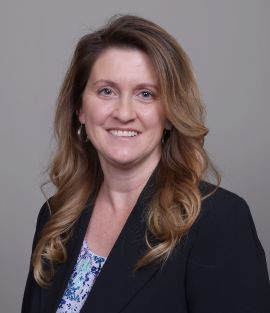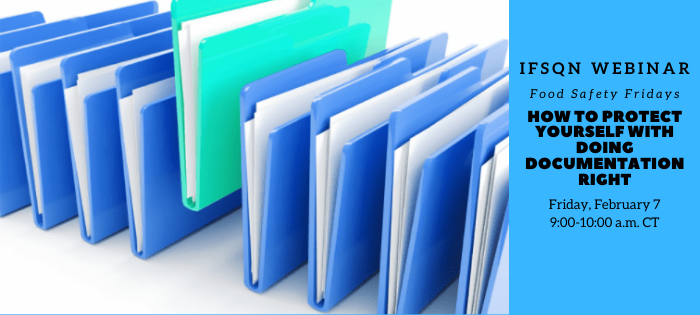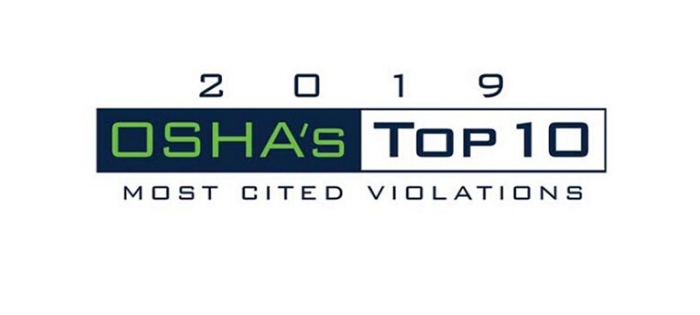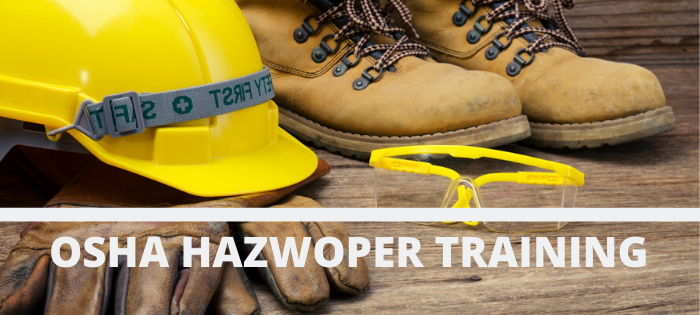
Principles of Auditing
To ensure companies uphold standards (internal or external) and continuously improve performance, audits are critical. In short, there are three primary purposes of auditing:
- Verify conformance with the standard/requirement – Are we doing what the standard/requirement says we must do?
- Verify implementation of stated procedures – Are we following the steps in our documented procedures?
- Evaluate effectiveness – Are we accomplishing our goals and objectives?
For an audit to be effective, appropriate mechanics must be in place when it comes to planning, execution, and reporting.
PLANNING
As with most things, your execution will only be as good as your plan. All good audits must begin with planning. This involves everything from planning for your team, to planning out the scope of the audit, to planning all the associated logistics.
Auditors: Who Is on the Team?
Depending on the size and complexity of the audits, audit teams need to be selected. These individuals must be independent of the area being audited and trained in the basic elements of the facility’s management system and/or programs. Team members will be led by a trained auditor. The auditor’s responsibilities include the following:
- Comply with and communicate audit requirements
- Prepare working documents under the direction of the Lead Auditor
- Plan and carry out the assigned responsibilities within the scope of the audit
- Collect and analyze evidence to draw conclusions
- Document audit observations and findings
- Report audit results to Lead Auditor
- Retain and safeguard audit documents
- Cooperate with and support the Lead Auditor
- Assist in writing the report
As indicated above, one person on the team is typically designated the Lead Auditor. This individual will coordinate audit assignments and address any questions/concerns that may arise. Specifically, the Lead Auditor has the following responsibilities:
- Assigns team members specific management system/program elements, functions, or activities to audit
- Provides instructions on the audit procedure to follow
- Makes changes to work assignments, as necessary, to ensure the achievement of audit objectives
Audit Objectives, Scope, and Plans: What Are We Auditing?
The audit is all about:
- Conformance – auditing sections of the standard/requirements to determine if the system conforms
- Implementation – auditing work instructions to see if they are being followed
In determining the audit scope, it is importation to define what is to be audited (e.g., policy, planning, implementation, checking/corrective action, management review). If the organization has more than one physical location, the scope may outline what physical locations and/or organizational activities are to be audited (e.g., production lines or departments). These factors will ultimately also help determine the length of the audit.
Logistics: How Are We Going to Do This?
There are many things to factor into the audit from a logistical standpoint for it to go smoothly. Safety should always be of utmost concern. What precautions do auditors need to take? Is there any PPE that might be necessary? Do auditors need any special safety training introduction or training before conducting the audit? Consider the facility. Auditors need to understand the operation/activity being audited. In line with this, the auditor must also have an understanding of whether there is any equipment or special resources needed, ranging from technical support (e.g., tablets, smartphones) to lunch. Finally, it is important to make sure there are no conflicts of interest when it comes to the auditor and the facility that is being audited.
EXECUTION
Once planned appropriately, audits should be conducted according to the program elements. Interviews and objectives evidence will both provide the support needed to conduct a valid audit.
Program Elements
The auditor must know in advance which elements are being covered in an audit so he/she can:
- Control the pace of the audit.
- Guide the course of the audit.
That being said, additional audit activities should not be restricted if other issues arise.
Auditing should only be done against current controlled work instructions or procedures related to the program elements. Procedures that are being used in the field must be verified. Historical and/or uncontrolled procedures should not be used.
Auditors must remember that they are creating a record. Notes should include statements, document numbers, identifiers (e.g., department, area), positions. Common pitfalls to be avoided in taking notes include abbreviations, no location identifier for observations, no document references, illegible, pejorative, cryptic. These things all impact the credibility of the audit.
Interviews
The goal of an interview in the audit is to obtain valid information. However, how questions are asked will impact the answer. Auditors must prepare and know what questions need to be asked and how to ask them in advance of the audit. Creating an atmosphere of trust and open communication is key to getting open and honest responses. Remember, the goal is to audit the system, not the interviewee.
The following are good rules of thumb for conducting effective audit interviews:
- Direct questions to the person who does the job, not to the supervisor.
- Never talk down to anyone.
- Speak the person’s language.
- Speak clearly and carefully.
- LISTEN!
- Use who, what, where, when and why in your questioning vs. can or does.
Objective Evidence
Objective evidence provides verifiable information, records, or statements of fact. This is vital in any audit report. Objective evidence can be based on any of the following:
- Interviews
- Examination of documents
- Observation of activities and conditions
- Results of measurements
- Tests
- Other means within the scope of the audit
Evidence should be firsthand evidence based on witnessed fact, not supposition, presumption, hearsay, rumor, or conjecture. It can be qualitative or quantitative, but it should be repeatable.
REPORTING
Findings form the basis of the report. Findings can be classified in one of two ways:
- Nonconformance is the observed absence of or lapse in a required procedure or the total breakdown of a procedure that can cause a negative impact on the organization’s environmental performance. These can fall into a few categories:
- Does not meet the requirements of the standard. This may include issues identified with records, procedures, work instructions, and use of controlled documents.
- Is not fully implemented. Most commonly, these implementation nonconformances may relate to training, communication, and documentation.
- Is improperly implemented. This is often demonstrated by worker lack of understanding, improper implementation of written work instruction, or missing stated required deadlines.
- Opportunity for improvement is just that—an opportunity to improve management to either reduce impacts, minimize legal requirements, prevent future nonconformances, or improve business performance.
The following examples and tips can serve as guidelines for writing useful and more concrete findings that will the company to identify opportunities for improvement:
- Do not overstate conclusions.
- Poor: The procedure for handling spent light bulbs is being ignored.
- Better: Three spent fluorescent bulbs were found in the general trash.
- State the problem clearly and exactly.
- Poor: Instruments are not being calibrated.
- Better: The sampling and analytical instruments in the wastewater treatment plant are not calibrated.
- Avoid generalities.
- Poor: The area’s empty drum management process is inadequate.
- Better: The hi-lo driver in the area handling empty drums was not trained on hazardous material handling.
- Communicate the extent of the problem fully.
- Poor: All cardboard in the catalytic converter area is being sent to the compactor.
- Better: None of the cardboard in the catalytic converter area was being stored and/or evaluated for reuse as dunnage.
- Do not focus on criticisms of individuals.
- Poor: Jim Jones had no understanding of the safety policy.
- Better: Discussions with several employees indicated that the safety policy was not fully understood.
- Give specific references.
- Poor: Hazardous waste area inspections have not been conducted.
- Better: Weekly hazardous waste storage area inspections (VMEWP-008) have not been conducted since June 2002.
- Avoid indirect expressions.
- Poor: There were occasions when the reports were not filed on time. It appears the air monitoring equipment is not calibrated.
- Better: Reports were filed late on ten occasions in 2002. There were no records of air monitoring equipment calibrations for 2001 or 2002.
Audits are a skilled activity. They provide the basis for assessment of conformance and, correspondingly, company actions to improve performance. For audits to be valuable, however, the audit process must be consistent and controlled. Clearly and correctly documented nonconformances lead to appropriate corrective actions—the mechanism for translating audits into improvements.

Comments: No Comments
Join KTL at NACD’s Events this February & March
Southern Region Meeting: February 24-26, 2020
KTL is looking forward to seeing many NACD member companies at the NACD Southern Region Meeting in Savannah, GA February 24-26. It’s always such a great time to gain great insights from the NACD speakers, touch base with you on the latest happenings in your organization, and continue our conversations about your business and compliance needs.
Jake Taylor, KTL’s Responsible Distribution Adviser, will be available throughout the meeting to talk more about how KTL can help chemical distributors more effectively manage management system requirements (e.g., Responsible Distribution, ISO 9001) and ongoing EHS&S and food safety compliance obligations.
Spring Regulatory & Responsible Distribution Workshop: March 10-12, 2020
Plus, save the date for the NACD Spring Regulatory & Responsible Distribution Workshop this March in Long Beach, CA. The 2020 Regulatory Workshop focuses on International Trade for Chemical Distributors on March 10.
Attention turns to Responsible Distribution March 11-12. There are many great sessions planned for new and experienced NACD members, including KTL’s interactive session on Thursday, March 12 from 9:15-10:15: Digging Up the Roots! Root Cause Analysis Review and Exercise. Jake Taylor will be guiding participants through properly identifying root causes using real-world examples from 6th cycle non-conformance findings.

Comments: No Comments
KTL Adds New EHS Expertise
 Kestrel Tellevate is growing our EHS resources with addition of Senior Consultant Julie Marks.
Kestrel Tellevate is growing our EHS resources with addition of Senior Consultant Julie Marks.
Julie is a chemical engineer with over 20 years of experience solving regulatory challenges at industrial and commercial facilities. She has a deep understanding of environmental, health and safety (EHS) and quality management systems; environmental regulatory compliance requirements, particularly related to water, air, solid waste, hazardous waste, and remediation; and safety standards and programs.
Julie brings to KTL a well-rounded background. She has worked in industry, provided consulting engineer services to industrial and commercial facilities, and held various positions on the regulatory side. As a Senior Consultant, Julie excels at translating regulations into clear actions and helping organizations implement the regulations in a practical way. She is skilled at assessing regulatory applicability, working with regulatory agencies to negotiate requirements, and collaborating with clients to ensure and document proof of compliance with regulations.
Read Julie’s complete bio for more information.

Comments: No Comments
Webinar: Protect Yourself by Doing Documentation Right
Join Kestrel Tellevate, along with DNV GL, for a FREE IFSQN Food Safety Friday webinar on How to Protect Yourself with Doing Documentation Right.
Food Safety Friday Webinar
How to Protect Yourself with Doing Documentation Right
Friday, February 7, 2020
9:00 a.m. – 10:00 a.m. CT
REGISTER NOW!
KTL Principal Bill Bremer will discuss the legal aspects of preparing food safety and quality documentation in the right way from the start. The webinar will cover the proper progression of developing documented programs correctly and the related information management requirements (i.e. verification, validation, back-up and systems-based document control).

Comments: No Comments
KTL Expands International Resources
 Kestrel Tellevate is expanding our international resources with the addition of Consultant Emily Watt. Emily has in-depth knowledge of and experience as a Project Manager, working with federal contracting regulations and requirements. As a Consultant with international experience across multiple sectors, Emily will be working with KTL’s multinational clients and government agencies to provide EHS compliance and sustainability support.
Kestrel Tellevate is expanding our international resources with the addition of Consultant Emily Watt. Emily has in-depth knowledge of and experience as a Project Manager, working with federal contracting regulations and requirements. As a Consultant with international experience across multiple sectors, Emily will be working with KTL’s multinational clients and government agencies to provide EHS compliance and sustainability support.
Emily has worked on implementing projects for the U.S. Forest Service (USFS), U.S. Agency for International Development (USAID), U.S. Department of Agriculture (USDA) Agricultural Research Service (ARS), Office of Cooperative Threat Reduction (CTR) Chemical Security Program, and U.S. Department of State International Visitor Leadership Program (IVLP). Her primary countries of experience include Nigeria, Zimbabwe, Vietnam, Iraq, Turkey, Brazil, Malawi, South Korea, and India.
Read Emily’s complete bio for more information.

Comments: No Comments
OSHA’s FY2019 Top 10 Most Cited Violations
For the ninth consecutive year, Fall Protection – General Requirements (1926.501) has topped OSHA’s Top 10 Most Cited Violations list. The complete list for fiscal year 2019 includes:
- Fall Protection – 1926.501
- Hazard Communication – 1910.1200
- Scaffolding – 1926.451
- Lockout/Tagout – 1910.147
- Respiratory Protection – 1910.134
- Ladders – 1926.1053
- Powered Industrial Trucks – 1910.178
- Fall Protection – Training Requirements – 1926.503
- Machine Guarding – 1910.212
- Personal Protective and Life-Saving Equipment – Eye & Face Protection – 1926.102
In this article with Safety+Health, Deputy Director of OSHA’s Directorate of Enforcement Programs Patrick Kapust said, “These are common violations that we’re finding – they’ve been in place for a lot of years. The answers are out there, and employers shouldn’t feel like these are very complex issues.”
He further explains in the interview that the top 10 violations remain largely the same (with some variation in order) because employers don’t aggressively target these hazards in the workplace, despite OSHA’s resources. Falls remain the top cited hazard because they result in significant injuries and deaths.
That being said, falls, as well as the other top safety areas on the list, are easily preventable with the right training and commitment. Kapust suggests that the top 10 cited hazards are a good place to start when evaluating your workplace hazards. From OSHA’s perspective, targeted enforcement and outreach are two critical tools in getting employers to identify and correct hazards in the workplace. H&S professionals are encouraged to continue developing and promoting strong safety and health programs, as well as educating and training workers in safety awareness.
Read the entire Safety+Health article and interview with Kapust.

Comments: No Comments
Holiday Wishes from KTL
One of the real joys this holiday season is the opportunity
for all of us at Kestrel Tellevate LLC to say thank you
and to wish you the very best for the new year.

Comments: No Comments
The Latest on RMP: Reconsideration Rule Finalized
The Environmental Protection Agency’s (EPA) Risk Management Program (RMP) Rule requires facilities storing specific chemicals above certain threshold amounts to develop risk management programs to prevent and mitigate accidents that could release those chemicals into the environment. Just what the RMP rule entails has been the subject of debate since EPA first proposed the RMP Amendments in 2016. Rules related to RMP requirements have been published, petitioned, delayed, vacated, reissued, and reconsidered. As the most recent action in the ongoing RMP saga, EPA Administrator Andrew Wheeler signed the RMP Reconsideration Rule on November 21, 2019.
Reconsideration Rule
According to EPA Administrator Wheeler, the intent of the RMP Reconsideration Rule is to promote “improved coordination between chemical facilities and emergency responders, reduce unnecessary regulatory burdens, and address security risks associated with previous amendments to the RMP rule.”
What does that entail? In the final Reconsideration Rule, many of the major provisions that were added in the RMP Amendments Rule are rescinded, including the following requirements to:
- Hire a third-party to conduct a compliance audit after an RMP reportable accident. EPA retains the right to still require a third-party audit, when appropriate.
- Conduct a Safer Technologies and Alternatives Analysis (STAA). Again, this can still be required by EPA but is already encouraged under the rule’s existing Process Hazard Analysis (PHA) provisions.
- Conduct and document a root cause analysis after an RMP reportable accident/near miss, in efforts to maintain consistency with the OSHA Process Safety Management (PSM) standard.
- Make very broadly defined information available by facility to the public upon request to alleviate potential security/terrorism threats.
A number of other requirements, particularly as it relates to local emergency coordination and training exercises have been retained and/or modified, as follows:
Retained
- Requirements that facilities must coordinate annually and document coordination with local response organizations.
- Annual notification drills to confirm that emergency contact information is accurate.
- Requirement to perform field and tabletop exercises as a way to train facility personnel and local responders.
- Frequency of 3-year tabletop exercises to ensure regular emergency training is conducted.
Modified
- Provision to reduce potential security risks associated with avoiding the open-ended information disclosure provision.
- Frequency of field exercises by removing the ten-year minimum requirement to reduce burden on local emergency responders.
- Scope and documentation provisions for field and tabletop exercises to reduce burden.
- Requirement to hold a public meeting after an incident that has offsite impacts vs. releases with only onsite impacts.
The EPA RMP Website provides additional information and resources, as well as a copy of the complete RMP Reconsideration Rule and the updated requirements.
Risk-Based Approach
According to the EPA RMP Reconsideration Final Rule Fact Sheet, the final rule retains the prevention provisions that have resulted in the trend of fewer significant chemical accidents, which have declined more than 50% since RMP was first published in 1999. With the RMP Reconsideration Rule, EPA’s intent is to take a more risk-based approach that focuses on the highest risk facilities (i.e., the less than 2% of RMP facilities reporting multiple releases), as opposed to the 90+% of RMP facilities who reported no accidents from 2007-2016.
Industry Reaction
RMP regulates approximately 12,500 facilities, including agricultural supply distributors, waste/wastewater treatment facilities, chemical manufacturers and distributors, food and beverage manufacturers, chemical warehouses, oil refineries and other chemical facilities. As a whole, industry has commended EPA for taking a more risk-based approach to RMP that reduces the regulatory burden on industry:
- “The RMP program has been working very well. The data clearly shows a continuous reduction in accidents of regulated facilities. It is important for EPA to focus on compliance assistance efforts and promoting enhanced coordination between RMP facilities and local first responders.” Richard Gupton, Senior Vice President of Public Policy and Counsel, Agricultural Retailers Association (ARA)
- “SOCMA and its members have been actively engaged in the reconsideration of the 2017 RMP Amendments and has been supportive of the Agency’s efforts to delay implementation of the prior rule while it conducted reconsideration proceedings. This final rule will provide much-needed certainty at facilities seeking to understand and achieve their RMP compliance obligations.” Robert Helminiak, Vice President of Legal and Government Relations, Society of Chemical Manufacturers and Affiliates (SOCMA)
- “We commend the EPA for developing a rule that reflects the extensive feedback the agency received through a comprehensive and thoughtful process to seek public input. The agency wisely incorporated the recommendation to strike the right balance of sharing vital safety information with emergency responders and protecting sensitive security information. EPA also followed the recommendation to utilize the EPA’s latest data to identify areas where more focused compliance assistance is needed to help facilities further reduce the number of reportable safety incidents.” Mike, Walls, Vice President of Regulatory and Technical Affairs, American Chemical Council (ACC)
- “NACD commends EPA for taking our recommended changes to the 2017 rule seriously and for instead pursuing a commonsense approach that improves facility safety without hamstringing businesses with burdensome requirements that have no proven benefit.” Jennifer Gibson, Vice President of Regulatory Affairs, National Association of Chemical Distributors (NACD)
Implications/What’s Next?
As the regulatory history with the RMP Rule demonstrates, it remains important for impacted companies to stay on top of the requirements, coordinate efforts with local emergency responders, and plan accordingly. For companies impacted by the RMP Reconsideration Rule, it is important to:
- Understand the hazards posed by chemicals at the facility
- Assess the impacts of a potential release
- Design and maintain a safe facility to prevent accidental releases
- Coordinate with local emergency responders
- Minimize the consequences of accidental releases that do occur
Kestrel Tellevate LLC (KTL) has experience working with a broad cross-section of industries impacted by RMP, particularly chemical companies. We have created RMP and General Duty Clause audit protocol and conducted audits and investigation/improvement programs following significant release events. We also routinely work with Local Emergency Planning Commissions (LEPCs) to coordinate emergency response efforts and exercises.
Our understanding of the regulations and industry needs spans years of experience and commitment to helping industry comply with regulations and operate more efficiently. For example, KTL developed and implemented the Guidance Manual and Training Modules for the Responsible Care Management System (RCMS) and RC14001, ACC’s management system integrating environmental, safety/process safety and security. KTL is also a Preferred Provider of compliance services for NACD member companies and a recognized NACD Responsible Distribution Adviser, providing in-depth support for members and affiliates during Responsible Distribution implementation and integration with other management systems and EHS compliance initiatives.
Regulatory enforcement-driven projects such as those related to RMP require skills in regulatory strategy, negotiations, expert analysis, presentations and testimony—and, equally important—trust and relationship building. KTL can work with companies to:
- Identify/understand/prioritize compliance risks
- Outline steps to improve performance
- Define organizational roles and responsibilities
- Streamline compliance methods
- Plan and conduct required tabletop exercises and coordinate with local emergency response
- Implement, monitor, and continually improve

Kestrel Tellevate News / Safety
Comments: No Comments
OSHA HAZWOPER Training in Iowa this Winter
24-hr OSHA HAZWOPER Training
This course is offered at the Technician level and covers broad issues pertaining to hazard recognition at work sites. Participants will learn strategies and protective measures to reduce or eliminate hazards in the work place. Cost: $495/participant- DECEMBER 17-19, 2019: REGISTER NOW!
8-hr OSHA HAZWOPER Technician Refresher
Learn to recognize basic hazard classes, how to read labels and use SDS to understand risk, how to use engineering controls or PPE to prevent exposure, basic information addressing field analytical equipment, and how to correctly respond to spills and implement emergency response site plans. Cost: $165/participant- JANUARY 21, 2020: REGISTER NOW!
- JANUARY 22, 2020: REGISTER NOW!
Training Details
- Training is scheduled to begin at 8:00 am and end at 4:30 pm (or until material is complete).
- Snack and lunch will be provided.
- Participants will receive a training manual, pre-/post-competency test, exercises, and a certificate of completion, provided they receive an 80% or above on the test.
- Cancellations just be made 72 hours in advance for a refund.
- Registration closes 72 hours prior to the scheduled training. Kestrel has the authority to cancel training with 72-hours notice if class size is not large enough.

4 Steps to Reporting Audit Results
The audit report communicates the information, findings and opinions derived from the audit. The report communicates either acceptability of the current status of the management system or reports non-conformances that need corrective action. The following outlines the suggested steps for reporting audit results.
Step 1. Assess the Status of Current Internal Controls
One of the auditor’s main responsibilities is to evaluate whether the current internal controls that govern the management system are adequate. Do the audits:
- Highlight areas of concern or hazards that may be a failure waiting to happen?
- Focus attention of the 20% of the factors that cause 80% of the problems?
- Help to eliminate ineffective controls or make existing controls better?
- Aid in the detection and prevention of deficiencies or non-conformances?
- Look through and investigate possible “homeblindness”?
- Verify the management system links are supportive and feed each other information to assure continual improvement?
The auditors must constantly challenge the status quo and push the management system forward beyond its comfort level.
Step 2. Prepare Audit Report
Most facilities use a formal audit report system. The audit report format is prescribed and followed by the auditor. The auditor typically states:
- Date and time of audit
- Department audited
- Management system clauses audited to
- Personnel interviewed
- Documents reviewed
- Summary of findings
- Conformance or non-conformance determination
Step 3. Discuss Audit Findings
The lead auditor will then take the completed audit report and review the contents with the affected department head. Upon acceptance by the department head, the final audit report should then be signed by the department head verifying acceptance and responsibility for any change(s) required.
Step 4. Determine Plan of Action
The entire reason for conducting internal management system audits is to verify conformance and continually improve on the management system. Therefore, it is extremely important that all identified non-conformances are corrected in a timely manner.
Some companies place all audited non-conformances into their corrective/preventive action process for tracking purposes. Others place only critical non-conformances into the corrective/preventive action process. Regardless of the mechanics of tracking the identified audited non-conformances, it is imperative that corrective action is taken.
Once the corrective action is in place, the auditors should review the actions taken and verify the root cause was identified properly and resolved. An accept or reject decision can then be rendered for the change action.
If acceptable, no further action is required, and the issue is considered resolved. If unacceptable, the department head must complete a new root cause analysis, develop a new action plan, and put the new action plan into place. The auditors will now review the new action plan and make a determination of acceptance or rejection.
Audit Team Members
It is advisable to rotate your internal management system audit team members. This will allow for fresh perspective and a new set of eyes to look at the management system. This serves many purposes:
- Gives a specific timeframe of responsibly for those thinking of enlisting as an auditor
- Allows for gradual increase of responsibility over time; new auditors learn and perform audits, older auditors become mentors for the new auditors, graduates leave program and are viewed by company personnel as “knowledge experts” on the management system
- Allows for fresh perspective on auditing
- Trains numerous employees on the management system
- Reinforces the concept of continuous improvement
Are You Prepared?
Use your answers to the questions below to evaluate your preparation for reporting audit results.
- Has the auditor evaluated the current internal controls for suitability, adequacy, and effectiveness?
- Does the auditor have hard copy evidence of conformance and/or non-conformance?
- Have all questions prepared prior to the audit been satisfactorily answered and explained?
- Is the audit report clear, concise, and informative?
- Does the department head agree or disagree with the findings?
- Are all identified non-conformances tracked and resolved in a timely manner?
- Based on audit non-conformances, are procedures and work instructions being changed and improved?
- Do employees understand the management system is being audited, not the employee?
- Is change readily accepted by company personnel?
